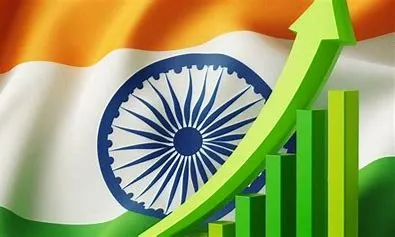“Innovation distinguishes between a leader and a follower.” While Steve Jobs intended these powerful words for a class of graduating individuals, the global status quo shows us that this is also descriptive of national-level trends. The countries which innovate are often the ones who primarily steer the direction of global affairs.

While India did achieve a milestone of being ranked 3rd among the lower middle-income countries in the Global Innovation Index (GII) 2020, it is a still an innovation laggard in the overall global setting, coming at 48th position behind China (14th) and some ASEAN countries such as Malaysia (33rd) and Vietnam (42nd). Patent applications continue to be concentrated within a handful of countries such as the US and China, while India remains a relatively marginal contributor.
Perhaps it is time we look towards foreign models and absorb their characteristics. The most hackneyed example in this regard is Silicon Valley. Numerous articles and studies have already explored how Bangalore or other parts of the nation can become the next Silicon Valley. Nevertheless, this recurrence is largely justified. What makes the Valley so enticing is how it is the all-rounded result of a strong education system, a vibrant risk-taking culture, productive competitiveness, and the espousal of foreign talent. There’s a lot of things that the Valley had to get right to be the global innovation centre that it is now.
But a fundamental takeaway from the American model which is often unexplored is the relationship between freedom and innovation. A beacon of liberty, America has ensured that the freedom to think, create, and produce for the masses is protected by its democratic frameworks. Educational institutions enjoy great autonomy which facilitates research, and the ease of doing businesses ensures that ideas-to-companies can be seamlessly executed.
There are other also interesting cases that provide further precedents for India’s innovation journey. Israel, despite having a population of just 9 million, is famously known as the “start-up nation” that boasts the highest start-ups per capita. The proactive role of the Israeli government in providing incentives and forging public-private partnerships forms the basis of Israel’s start-up engine. Another stand-out of Tel Aviv’s start-up ecosystem is its cultural take on risk management. Failure isn’t viewed pessimistically and is accepted as a cultural norm.
The Nordic countries—namely Sweden, Finland and Denmark—are also top-ranked nations in the GII. Like Israel, the governments in the Nordic region also play a huge hand in supporting R&D and incentivising entrepreneurship. But another unique highlight is how it elevates inclusive education—starting from the very beginning during the primary stages—and equal opportunities as a major propellant of creativity. Estonia is another neighbouring parallel with a vigorous innovation system that boasts the higher unicorn (start-ups with valuations more than $1 billion) per capita.
Japan, India’s very own fellow Asian nation, is a curious case of the convergence between historical cultural traditions and innovation. The desire for kaizen (continuous improvement) is strongly embedded in Japanese traditions, and one need not look beyond Japanese etiquettes and the meticulous work behind origami and sushi for examples. This deep-rooted perfectionism also forms the backbone of its high-quality innovation. Japan has also historically excelled in absorbing new technologies and building up on them to come up with improved innovations.
“But this is India! Foreign models won’t work here!”, shouts the sceptical Indian at the dinner table. To a certain extent, this reservation is well-founded. There is no denying that India has its own economic constraints and solving the innovation problem—especially in a globally competitive world—is not as simple as plug-and-play. The countries we mention as being exemplars of innovation hold a GDP per capita that is 20-30 times than that of India’s. Apart from accelerating innovations, India faces another daunting task ahead of it: making it affordable.
Coupling creativity and affordability is tricky and can restrict the flexibility of the Indian inventor. But some scholars argue that we can do better with less. Ideas such as “Frugal Innovation” bolstered by Navi Radjou and Jaideep Prabhu explore the reduction of complexity and the price of innovations by removing its nonessential features. The philosophical underpinnings of Gandhian Engineering, which is the design of ultra-low-cost products for a sustainable society, are also being pushed by the eminent scientist Dr R.A. Mashelkar. The idea of more from less for more (MLM) ensures that innovation works for all and not just a select few. This way, innovation-led growth via MLM product development is attained by sustainable means and aligns with India’s long-run SDGs.
However, low-cost production does not mean that we compromise on quality and produce imminent junk. China is now realising this and has transitioned from low-end to high-quality production. Cost and quality must be carefully juggled.
But make no mistake: India’s limitations do not mean we have nothing to absorb from foreign models. These models themselves are successful due to a blend of factors and do not abide by a strict formula, but they help in highlighting different fundamentals that can be integrated within India’s approach. Israel for its successful deployment of government resources and bold culture; the Nordic model for its strong foundation in education and equal opportunities; the US for its protection of freedoms; and Japan for its absorption of new technologies and hunger for perfection.
In crux, for India to build a strong foundation for spurring innovation, it needs both the role of the state and the private sector in bolstering human and financial capital and a risk-friendly culture.
There is some laudable progress being made on some of these fronts. The Atal Innovation Mission—especially its nation-wide Tinkering Labs initiative—fosters innovative mindsets during the seed stages of schooling. The Science Technology and Innovation Policy (STIP) 2020 also contains reforms that strengthen industry-academia-society linkages.
Overall, India has moved up significantly in the GII over the past few years, but there is still more distance to be covered if it were to become a global innovation hub.
According to the recent India skills report, less than half of Indian graduates are employable. Only 2.5% of tech graduates possess the skills that Artificial Intelligence requires. There is a massive education gap, and this must be corrected if we were to lead India’s innovation to be on par with global standards. Institutions must also be granted with greater autonomy to protect innovative freedoms.
Most innovation leaders have a GDP portfolio that has at least a 2% share for R&D. India’s dismal <1% R&D spending is almost entirely borne by the government, exposing the large gap left void by the private sector. For India to bring up its R&D spending to 2% of the GDP, the private sector will have to step up and engage in research endeavours just like we see in other global innovation leaders such as Japan and the US.
There are also certain “invisibles” whose connection to innovation is rather blurred and whose importance is undermined in India. One such crucial aspect is gender equality. To truly harness the benefits of a large young demographic, we need to mobilise human capital efficiently—and that includes women. How are we expected to be more innovative if we perpetuate a culture that obscures the ideas of nearly half the population? An Accenture report found that an innovation mindset was six times higher in the most-equal workplace cultures than the least-equal. As exemplified by the Nordic model, apart from the social aspect, there is a strong economic and growth case to be made for gender parity.
Collective attitude matters as much as the economics behind innovation. India has a large precedent of start-up success stories in Ola, Flipkart, Oyo, and many others. One’s success can be another’s inspiration, and this can be a robust cycle that empowers start-up led innovations.
The pandemic might have hampered economic progress, but it ironically led to the technological evolution of many MSMEs. In order to reach locked down consumers, businesses increasingly adopted digital tools. Riding on this digital wave, this new setting can be further built upon by introducing more new technologies. Demand for such innovations is rife and will likely remain so.
Big Tech’s monopoly has also posed a serious question of its abilities to innovate amidst its rigorous pursuit to increase market share rather than develop new products that change lives. This further calls for bold start-ups to disrupt the market to prevent creative stagnation.
The harsh truth is that innovation is risky. The road to becoming an innovation superpower is undeniably complex and will require tireless determination. Every stage of an individual’s development—starting from primary schooling to the workplace—must be scrutinised and revamped.
But the economic payoffs for embarking on the innovation journey are huge (and necessary). A growing bright, young population offers tremendous hope and positively signals that ground-breaking innovations are very well within India’s reach. For a country that is credited with some of the most influential innovations from Aryabhata’s number 0 to J.C. Bose’s radio technology, it is high time that we reclaim our ancient status as an innovation superpower in this modern era.
Rajesh Mehta is a Leading International Consultant & Columnist working on Market Entry, Innovation & Public Policy. Manickam Valliappan is a public policy researcher working closely with Mr. Mehta. Views expressed are personal.























